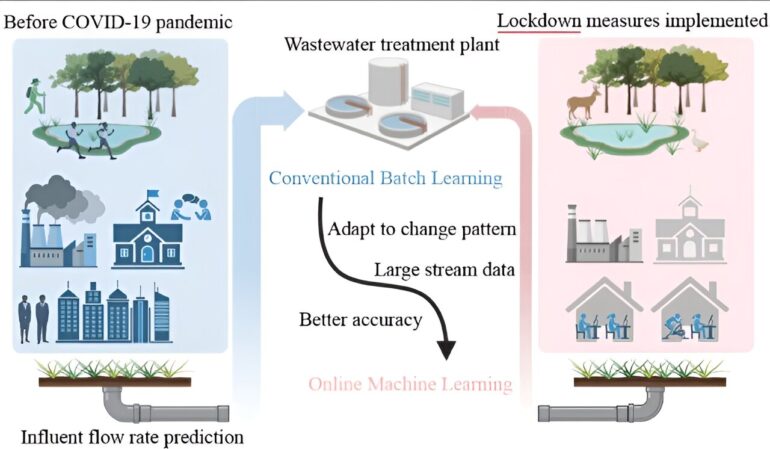TL;DR:
- Accurate influent flow rate prediction is crucial for wastewater treatment plants.
- Earlier data-driven models were inadequate during the COVID-19 era.
- Online learning models outperform traditional batch learning.
- Adaptive models efficiently handle changing influent data patterns.
- Potential to enhance decision support for wastewater management.
Main AI News:
In the realm of wastewater treatment, precision is paramount. Accurate predictions of influent flow rates are essential to optimize the operation of treatment facilities. The influent flow, representing untreated water entering the plant, plays a pivotal role in resource allocation and operational efficiency. Leveraging data-driven models has long been recognized as a powerful tool in this endeavor, but the era of COVID-19 brought forth new challenges and necessitated a shift in approach.
Historically, earlier studies primarily relied on batch learning techniques, which, though effective in many cases, proved inadequate when faced with the dynamic influent patterns witnessed during the pandemic. Batch learning involves accumulating data over time and training machine learning models in discrete batches. While this approach is generally faster and less computationally demanding, it tends to struggle when confronted with extensive and evolving datasets, which was precisely the case with influent flow rate prediction during the COVID-19 era.
The limitations of conventional batch learning models became glaringly evident as the pandemic-induced lockdowns drastically altered input-output relationships. It was in this context that a team of researchers from McMaster University sought a solution, turning their attention to online learning models as a potential remedy for these challenges.
Pengxiao Zhou, a civil engineer at McMaster University, elaborates on their approach, stating, “We leveraged new machine learning techniques to enhance our ability to predict wastewater influent flow rates within the context of the COVID-19 lockdown situation.” The ultimate aim was to develop models capable of seamless integration into commercial wastewater modeling software.
The team’s innovative online learning models include Adaptive Random Forest, Adaptive K-Nearest Neighbors, and Adaptive Multi-Layer Perception, all based on their batch learning counterparts: Random Forest, K-Nearest Neighbors, and Multi-Layer Perception.
To put these models to the test, the team harnessed three to four years of hourly influent flow rate data and meteorological information, sourced from two Canadian wastewater treatment plants. They conducted a rigorous comparison between the newly developed online learning models and their traditional batch learning counterparts, evaluating their ability to predict influent flow rates under changing conditions.
Two distinct prediction scenarios were explored: one with a 24-hour lead time and another without any lead time. The online learning models showcased their prowess by generating precise predictions amidst evolving data patterns, demonstrating efficiency in handling continuous and voluminous influent data streams. In this head-to-head comparison, the online learning models emerged as the superior choice.
Zhou emphasizes the significance of these findings, stating, “The proposed new online learning models can provide more robust decision support to wastewater operators or managers for coping with changing influent patterns due to emergencies such as COVID-19.“
As the research advances, the team’s future studies will encompass a broader array of case studies and diverse prediction scenarios, further solidifying the reliability of their developed models. Their overarching goal is clear: to furnish the wastewater management field with dependable tools and propel the evolution of wastewater intelligence.
Conclusion:
The development of online learning models for predicting influent flow rates represents a significant advancement in wastewater management. These adaptive models provide more reliable decision-making tools, particularly in times of changing influent patterns like those witnessed during the COVID-19 pandemic. This innovation has the potential to revolutionize the wastewater management market by improving operational efficiency and resource allocation in treatment facilities.

